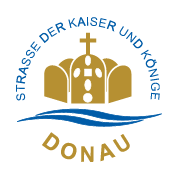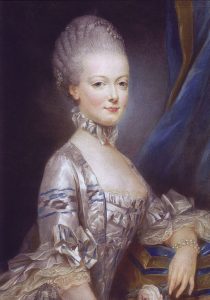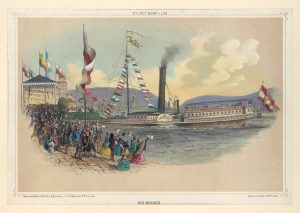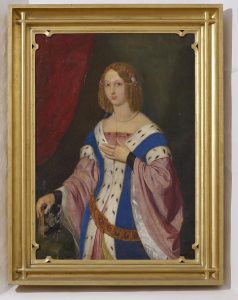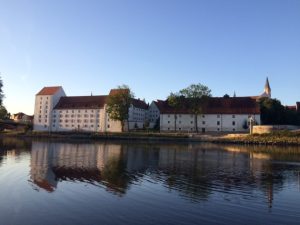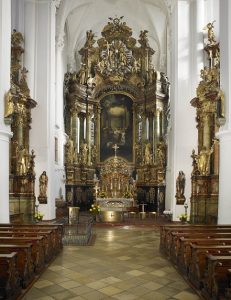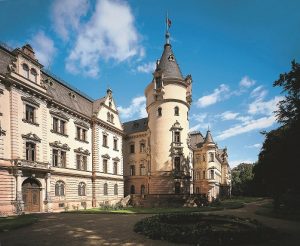Weddings on the road of emperors and kings
A YES with noblesse
The waters of the Danube have carried many a bride towards her married life. Especially in those days when roads and carriages still left a lot to be desired in terms of safety and comfort, and shipping allowed for much more relaxed travel. This is how the Bavarian duke's daughter Gisela from Regensburg chose the Danube for her bridal journey to Budapest for her wedding to the later Hungarian king Stephen I in 995.
The extent to which the fiancée of the future Hungarian national saint made the decision - both for the wedding and for the means of transport itself - remains questionable: the bride, who was to conclude her pious life as abbess of the Passau monastery of Niederburg and be beatified by papal decree, was only 10 years old at the time. However, this was not to prevent her from going down in history as the first Christian queen of Hungary and the first great woman on the Danube.
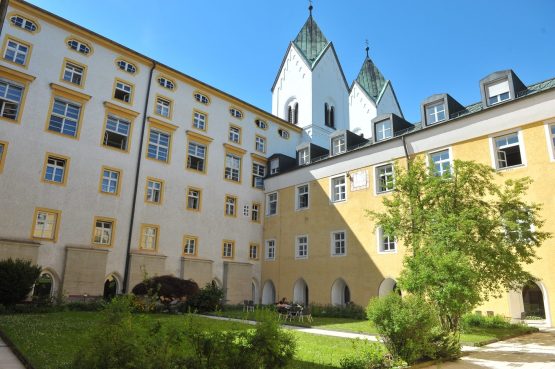
Her last center of life, Passau, had to wait a few more centuries for the spectacle of a wedding of crowned heads. In 1676, however, the city on the Three Rivers even enjoyed the pleasure of an imperial wedding. The marriage of Emperor Leopold I to Eleonore Magdalene of the Palatinate-Neuburg was a great moment in the city's history. How the Habsburg took his second cousin as his third wife can be seen in a large mural by Ferdinand Wagner in the meeting hall of Passau City Hall. For his depiction, which was created almost 200 years later, the artist relied on a report by the prince-bishop's court notary Gentilotti due to the lack of eyewitnesses.
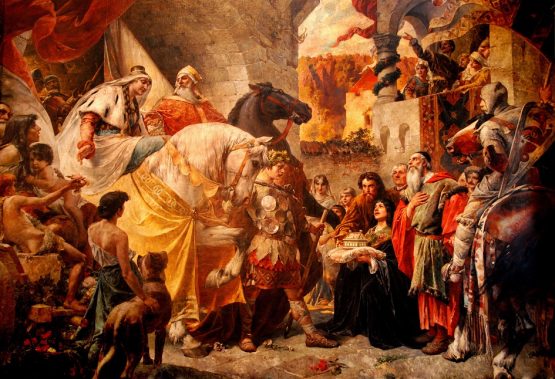
Passau City Hall Halls: Magnificent paintings adorn the walls and ceilings of the baroque-style Passau City Hall Halls. In addition to the wedding of Emperor Leopold I, the painter Ferdinand Wagner also created a scene from the Song of the Nibelungs, which was probably written in Passau.
During a city tour for individual guests you will learn more about the history of Passau. You will see the cathedral square, charming alley, squares and promenades and if possible also the residence and the town hall halls.
More information here.
Less rarely than in Passau, imperial-royal weddings were celebrated in all their splendor in Budapest. Matthias Corvinus, King of Hungary, Croatia and Bohemia, went to the altar twice in the Matthias Church. First in 1461, to make the Bohemian king's daughter Catherine his own, and a second time shortly before Christmas Eve 1476, when the ruler took Beatrix of Aragon's hand in marriage in exchange for his word.
As conqueror of large parts of the Habsburg Empire, Corvinus also resided for a time in Vienna, where after the Habsburg reclamation of the empire, the more often high-minded marriages took place. As the winged "Tu felix austria nube" says, especially from Maximilian I onwards with power-political calculations. The Habsburgs married their way into Burgundy (in Ghent) and Spain (in Valladolid) and also into the Bohemian royal house with a splendid double wedding during a princely day in St. Stephen's Cathedral in Vienna in 1515.
One of the bridal couples, Ludwig and Maria, consisted of two nine-year-old children, but the twelve-year-old Anna had a mature husband in the form of the 56-year-old Emperor Maximilian. Even if only as a substitute and placeholder for his grandson Ferdinand, who only became available for the couple relationship with Anna after the Spanish succession had been clarified.
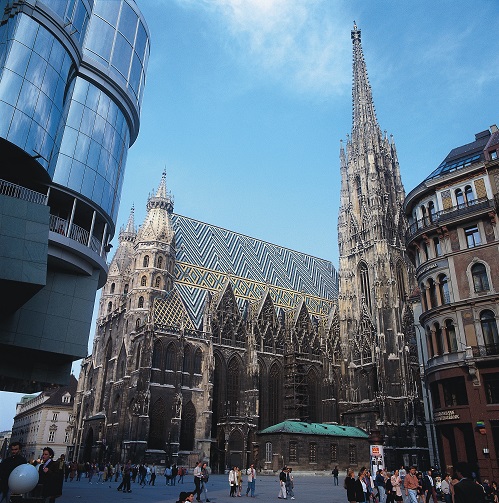
Maria Theresa, a descendant of Maximilian, refused to marry for reasons of state and, with the active support of her governess Countess "Mami" Fuchs, succeeded in marrying Franz Stephan of Lorraine, with whom she had fallen madly in love as a child. When her husband asked her father-in-law Charles VI for her hand in marriage, he did so in a tailor-made robe worth 300,000 gulden. An amount that could have bought as many pairs of men's shoes. The magnificent wedding with the "beautiful Franzos'" took place on February 12, 1736 in the Augustinian Church in Vienna. If Maria Theresa herself had followed her heart in her choice of partner, she forced her numerous children into the very political reasoning that she herself had fought against.
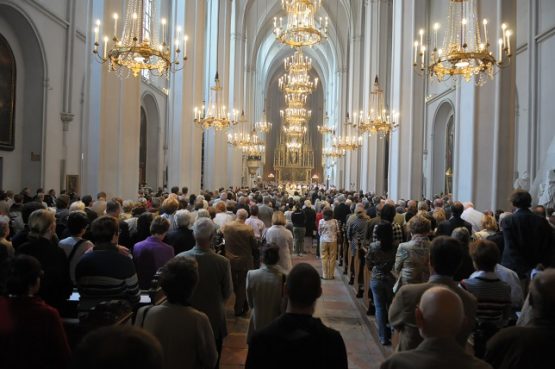
After the death of his beloved Spanish wife Isabella, she gave her son Joseph II, who was as legendary as he was young and widowed, Maria Josepha of Bavaria as his bride. The fact that one of the wedding gifts was a new "Italian" opera by Christoph Willibald Gluck based on a libretto by the court poet Metastasio was certainly not an appropriate consolation for
the forced union that the son entered into - reluctantly, but nevertheless. From the harpsichord, Archduke Leopold conducted the opera performance. A little later, his own wedding was to become the foreshadowing of the British romantic film comedy "Four Weddings and a Funeral," starring Hugh Grant and Andie MacDowell: In the midst of the exuberant wedding hustle and bustle, his grandfather Charles VI died of a stroke, whereupon mother Maria Theresa had to ascend the throne.
Like her other children, her daughter Maria Antonia vulgo Marie Antoinette was not spared the arranged marriage. The bridal route, completed with 57 carriages and 350 horses, led along the Danube. Upstream, because the marriage port was in Paris.
A few decades later, the Wittelsbach princess Elisabeth took the opposite route. With great social participation, the 17-year-old teenager embarked in Passau for Vienna in April 1854 in order to marry - once again in the Augustinian Church - Maria Theresa's descendant Franz Joseph I.. That the marriage was not to be under the best of stars was already apparent during the wedding journey on the Danube towards Vienna. In the dreaded whirlpools and narrows of Grein, the imperial steam yacht "Adler" ran aground. The bridal couple and their crew almost sank, but survived the accident unscathed and continued their honeymoon on the replacement yacht Hermione.
The marriage of the duke's son Albrecht to the fabulously beautiful Agnes Bernauer in the Danube town of Straubing had already come to a tragic end many centuries earlier. The nobleman from Wittelsbach and the daughter of a Baden man, who was not at all suited to his status, had met around 1428, presumably at a tournament in Augsburg. The couple, who were in love, married secretly, which turned a venial affair into a state affair. After two years of marriage in the Straubing ducal palace, Ernst, the father-in-law, had the Bernauerin arrested, condemned as a "wicked woman" and drowned under the Straubing Danube bridge to prevent possible disputes over the throne and succession.
Agnes Bernauer Chapel
The memorial chapel for Agnes Bernauer was donated by Duke Ernst I, her father-in-law, the year after her death. It was the visible sign of reconciliation with his son Albrecht III. This reconciliation in the House of Wittelsbach had been preceded by months of heated arguments between father and son, during which Albrecht III even threatened his father with war.
The late Gothic chapel in the historic cemetery of St. Peter houses a wonderful red marble epitaph of the Bernauerin. She is depicted on it in the dress of 15th-century Munich patrician women and carries a long prayer chain in her hands, a common wedding gift from the groom to his bride. At her feet lie two little dogs as symbols of fidelity. The chapel is accessible through guided tours, to be booked through the Office of Tourism and City Marketing. Outside of guided tours, visitors can take a look at the chapel and the Bernauer epitaph through the grille.
Duke's castle with knights' hall
Agnes Bernauer lived in the Straubing ducal palace for about two years with Duke Albrecht III and certainly got to know the imposing Knights' Hall and perhaps danced in it. This hall dates back to the 1420s. In the late Middle Ages, it was one of the largest banqueting halls in the German-speaking world. The Knights' Hall can be visited during guided tours. It serves as an event hall, for example for concerts and receptions.
Carmelite Church of St. Spirit
The Carmelite Church was also built in the time of the Duchy of Bavaria-Straubing-Holland, from 1368. It was the court church of the Wittelsbach dynasty in Straubing. That is why Duke Albrecht II is buried here. His high tomb from the first third of the 15th century is one of the most valuable late Gothic funerary monuments in southern Germany.
And Agnes Bernauer also wanted to be buried here. She already donated an altar in the Carmelite church during her lifetime, combined with a perpetual mass. Two months after her death, Duke Albrecht III, her husband, renewed and expanded this donation.
Agnes Bernauer was probably buried, in accordance with her wishes, in the cloister of the Carmelite monastery. However, her grave has not yet been found, which may also be related to the fundamental reconstructions of the 17th and 18th centuries. The church is accessible and can be visited during the day.
Agnes Bernauer Festival
Every four years, the Agnes Bernauer Festival Society stages the story of Agnes Bernauer's life, love and death in the courtyard of the ducal castle. Around 200 amateur actors then invite you ( next time in 2019) to a journey back in time to the late Middle Ages.
Regensburg, upstream from where Blessed Gisela once went on a grand bridal journey, can lay claim to one of the last great noble weddings on the Road of Emperors and Kings: On May 3, 1981, with free beer for the people, the glamorous wedding spectacle went over the stage, where "punk princess" Mariae Gloria Countess of Schönburg-Glauchau married Johannes von Thurn und Taxis, the 11th head of the famous German noble clan. The gala carriage in which she rode to the wedding can be seen in the Marstallmuseum Regensburg.
The fact that the Bavarian coat of arms above the city bears the unmistakable blue and white diamond pattern is, by the way, also due to a high-class marriage. It comes from Bogenberg on the Danube and entered the Bavarian coat of arms from the "holy mountain of Lower Bavaria" through the marriage of Countess Ludmilla of Bogensberg to the Bavarian Duke Ludwig in 1204.
- Thurn and Taxis Castle in Regensburg
- The Agnes Bernauer Memorial Chapel and the Duke's Castle in Straubing
- The town hall of Passau with the painting by Ferdinand Wagner in the meeting room
- The Augustinian Church Vienna
- The Sisi Museum Vienna in the Hofburg
- The Vienna St. Stephen's Cathedral
- The Matthias Church in Budapest
Getting married on the Danube...
Getting married in the Wachau. The Wachau has always been a magical attraction for lovers and couples who want to officially seal their love. Whether getting married in a baroque castle or in the castle garden, in airy heights or with a Roman background - particularly romantic places and enjoyable addresses are compiled here.
Links to marriage tips on the Danube Upper Austria
